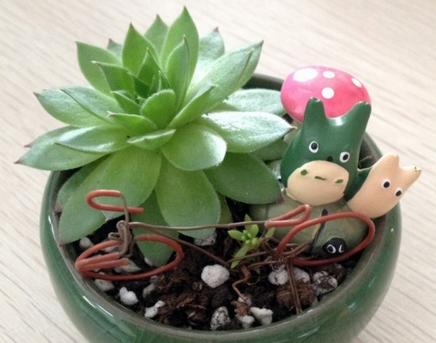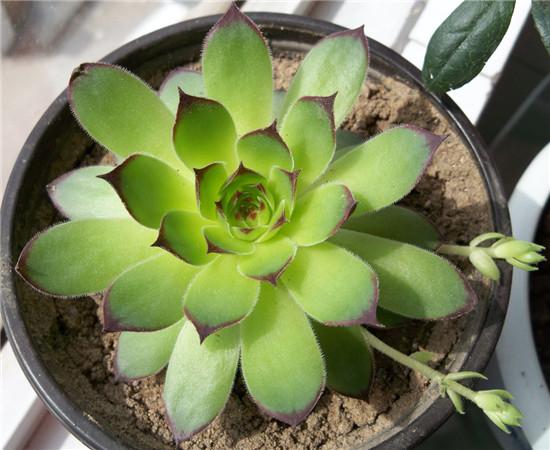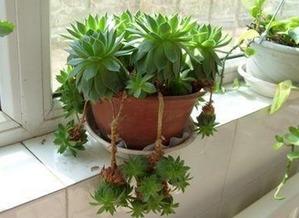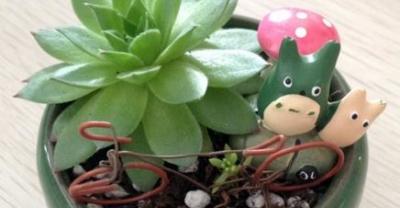Seven main points of culture of Guanyinlian
The succulent plant of the genus Avalokitella, also known as the long-growing grass, Guanyin lotus, and Buddha lotus. Native to the mountains of Spain, France, Italy and other European countries, it belongs to alpine succulent plants.
Guanyin lotus flesh, as its name, leaves rosette-shaped ring, such as rosette general shape, leaves flat and slender, front sharp, leaf margin with small villi, full light, leaf tip and leaf edge to form a very beautiful brown or purplish red.

Drowning oxygen green plant
one。 Soil
The basin soil is required to be loose and fertile and has good drainage and air permeability. rotten leaf soil or peat soil, coarse sand or vermiculite can be used in half, mixed with a small amount of bone powder and other calcareous materials.
two。 Temperature
The suitable growth temperature is 20-30 ℃ and the overwintering temperature is 15 ℃ in the warm, humid and semi-overcast environment. In winter, when the temperature is not lower than 5 ℃ at night and above 15 ℃ during the day, the plant can continue to grow and can be watered normally and fertilized properly.
three。 Light
Plants are dormant in high temperature in summer and cold in winter, and the main growth period is in the cooler spring and autumn seasons.

Drowning oxygen green plant
four。 Watering
Watering master "no dry, no watering, watering thoroughly", to avoid long-term stagnant water, so as not to cause rotten roots, but not too dry, otherwise the plant will not die, but the growth is slow, the leaf color is dim, and there is a lack of vitality.
five。 Fertilizer application
Mature rarefied liquid fertilizer or compound fertilizer with low nitrogen and high phosphorus and potassium was applied every 20 days or so. Don't splash fertilizer and water on the leaves when fertilizing. Fertilization is usually carried out in the morning or evening when the weather is clear, and the water is watered once in the evening or the next morning to dilute the residual fertilizer in the soil.
six。 Reproduction
The reproduction of evergreen grass can cut the small buds (small rosette-shaped leaf disk) germinated at the base in the growing season, cut them in the sandy soil, keep a little damp after cutting, and take root in 2-3 weeks, and some of them have roots under the leaflet disk, which can be put on the basin directly.

Drowning oxygen green plant
seven。 Change the basin
Turn the basin every spring or autumn of 1 to 2 years, prune the root system when turning the basin, cut off the withered root or overlong old root, the basin soil is required to be loose and fertile, and have good drainage and air permeability. Half of rotten leaf soil or peat soil, coarse sand or vermiculite can be used, mixed with a small amount of bone powder and other calcareous materials.
- Prev

Eight main points of culture methods of Cymbidium
Magnolia, native to southern South Africa, is a perennial herb with a florescence of 30-50 days, mainly in winter and spring, and New Year's Day blossoms before and after the Spring Festival.
- Next

Brocade carp culture with knowledge of fish culture
Hello everyone, this is the left and right studio, where we will share with you the fine knowledge about life, business, language and emotion. If everyone likes it.
Related
- On the eggshell is a badge full of pride. British Poultry Egg Market and Consumer observation
- British study: 72% of Britons are willing to buy native eggs raised by insects
- Guidelines for friendly egg production revised the increase of space in chicken sheds can not be forced to change feathers and lay eggs.
- Risk of delay in customs clearance Australia suspends lobster exports to China
- Pig semen-the Vector of virus Transmission (4)
- Pig semen-the Vector of virus Transmission (3)
- Five common causes of difficult control of classical swine fever in clinic and their countermeasures
- Foot-and-mouth disease is the most effective way to prevent it!
- PED is the number one killer of piglets and has to be guarded against in autumn and winter.
- What is "yellow fat pig"? Have you ever heard the pig collector talk about "yellow fat pig"?

